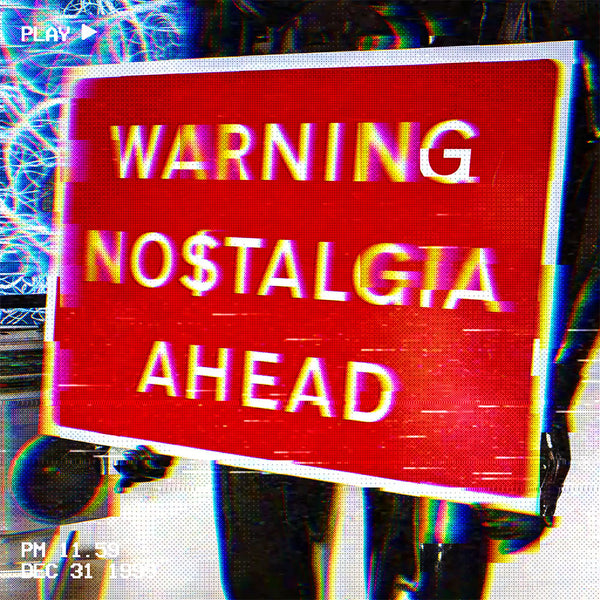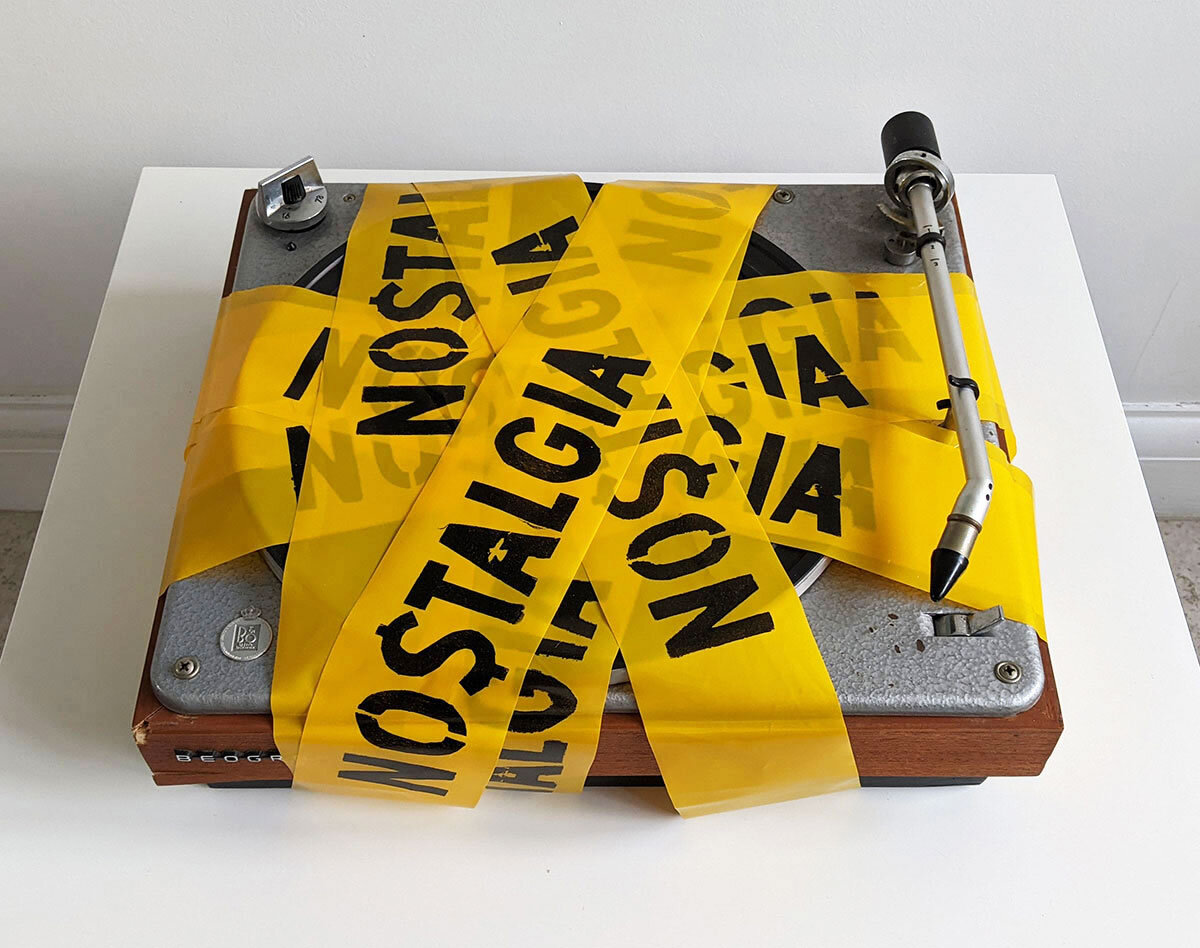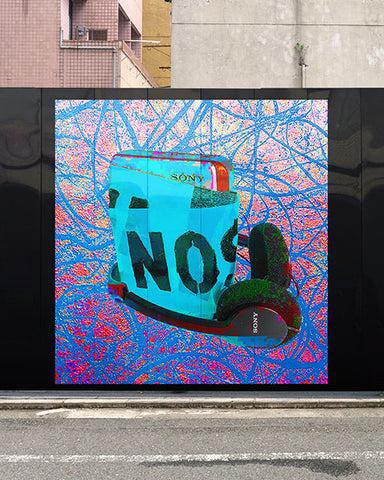INSTALLATION > DIGITAL ART > AUDIOVISUAL COLLAGE > AUGMNETED REALITY > PHYSICAL PRINTS
Transience | Obsolescence | Transformation | Nostalgia
'The NO$TALGIA SHOW' is a hybrid physical/digital art installation that traces a path through the forest of cultural retrospection.
Feel free to explore…

Nostalgia has evolved into a cultural and emotional commodity. The past is freely available for sale under the labels of vintage and retro. Your reminiscence bump has a price tag on it, and it’s just one click away...
All the cultural totems of the past have their 'Ozymandias Moment', both in terms of technology and utility. The kings and queens of the market enjoy only a brief omnipotence before their dominance is revealed to be ephemeral.


However, this obsolescence is only temporary. Regeneration and repackaging for the nostalgia market is an industry that mines these totems for both their financial and emotional value.
At the same time there is a concurrent bewildering rate of change in technological development, with technologies such as artificial intelligence, blockchain development, and genome engineering set to transform and disrupt their respective industries.
And yet the past is being recycled at an ever faster rate.
Why is this?
“The idea concerns the fact that this country wants nostalgia.
They want to go back as far as they can - even if it's only as far as last week.
Not to face now or tomorrow, but to face backwards.”
GIL-SCOTT HERON - “B-Movie”
Is nostalgia just a safe space? A refuge from the stormwinds of an accelerating world?
Perhaps. But then why would the icons of retro be at the heart of those communities at the very forefront of these developments?
The Non-Fungible Token (NFT) digital marketplace is at the cutting edge of technological disruption and yet celebrates the retro alongside the futuristic.
Superficially, it appears that culture and technology are enjoying a temporary bifurcation, but the alternative reality is that they are coexisting happily within an apparent paradox.
Confusing.
From the position of the rational consumer, a Walkman is not better than an MP3 player, which is not better than a smartphone with unlimited data and your streaming service of choice.
Each development is cheaper than the previous, and offers more choice and convenience. And yet there is a parallel reality where a Walkman is perceived to be more desirable than an MP3 player which is cooler than a smart phone.
At the same time vintage Boomboxes command a premium that far exceeds their utility or technical capacity. Why?
Surely this is conspicuous cultural consumption.
The vinyl revival offers more evidence of this phenomenon. People like vinyl. But again…why?
The relative audio merits of vinyl depend heavily upon the apparatus used to play it. It is an expensive and inconvenient format with a highly dubious environmental footprint, yet no-one doubts its power as an artefact of cultural and personal significance.
Meanwhile the vital and important bands of your formative years are touring again. selling out bigger venues than in their pomp, and for ticket prices that even they can scarcely believe. Sweat shop retailers sell t-shirts with reproductions of classic album covers of bands who stood firmly against the over-commercialisation of their music.
Maybe Malcolm McLaren was right all along.
But why the warning? Where is the danger here?
A romanticised halcyon past may just be an emotional comfort zone. An unalterable and sacred safe-space where ‘things were better’.
But ‘facing backwards’ can be symptomatic of a refusal to engage with the realities of the present and the opportunities of the future. It can stifle innovation. It is not harmless.
“Everyone has got to realise you can't hold onto the past if you want any future.
Each second should lead to the next one.”
JOE STRUMMER
Psychologically, the need to seek comfort in the past is perhaps a signal of something amiss in the present. While cultural arrested development may share similar foundations at an individual level, there is also a stadium-sized mass coalescence around the cultural events and icons of the Nostalgia Spectacle of the festival and stadium circuits.
Beyond cultural considerations, and thoughts about progress and obsolescence, nostalgia has been instrumental in the emergence of powerful forces. Retro-Utopianism is a self-evident paradox, but there is a core belief within a broad section of both society - and the electorate - within the developed West that the past was somehow better, and that in spite of the obstacles to turning the clock back, we should at least try to hold back the tide of progress.
“Nostalgia, that's what we want...: the good ol' days, when we gave'em hell.
When the buck stopped somewhere and you could still buy something with it".”
GIL-SCOTT HERON - ‘B-Movie’
There is a cost to all transactions. Are you sure that you still want that classic Walkman?
A more positive viewpoint is that the past can be - and is regularly - sampled in both art and music to create new innovations and interpretations. The concept of Remake / Remodel is fundamental to this. However the key distinction is the word ‘new’. There is a world of difference - and consequence- between faithfully recreating the past and remaking / remodelling it to a new purpose.
The last point on Nostalgia is that of my own personal and artistic conflict within the discussion above.
I have collected and retained a large collection of vintage audio and recording equipment over the years - including all the items featured above - and I retain a fascination for these objects despite their apparent obsolescence. My house is strewn with them both for their original purpose but also as purely decorative artefacts.
Am I living in the past? Possibly. But what lead me to consider the full spectrum of consequence, cause and effect of nostalgia -and the dynamics of the nostalgia market - was the fact that I surrounded myself with these objects, while advocating progress and innovation. The realisation that my subjective paradox was an indication of a broader objective phenomenon lead me to try to express it artistically to encourage discussion and self-examination around the subject.
The redeploying of the obsolete for decorative purposes - or as future antiques - has the positive benefit of diverting them from landfill, however, the idolatry of these objects as ‘icons of retro’ perhaps only reinforces their power as obstacles of progress.
Discuss.
"I never wanted to go back and relive the glory days, I just want to keep moving forward.
That's what I took from punk. Keep going. Don't look back."
PAUL SIMENON - ARTIST, & BASSIST IN THE CLASH
SLEEVE NOTES - THE NOSTALGIA TRAIL
The NOSTALGIA TRAIL was envisaged as an evolving art installation exploring the themes of Nostalgia, Obsolescence, Transience, Transformation and the Paradox of Retro-Utopianism.
The installation features a number of both physical and digital artworks.
The ultimate plan is to find a suitable gallery space that can display all the pieces together. Currently, the digital pieces will be minted as Non-Fungible Tokens on the carbon neutral NEAR Protocol blockchain.







